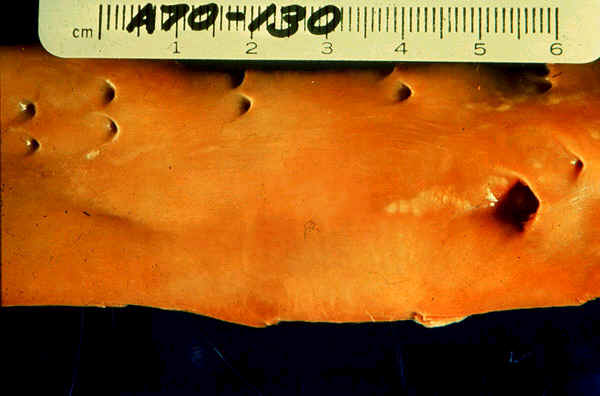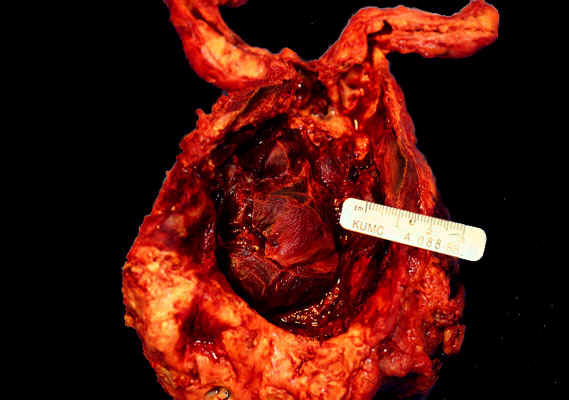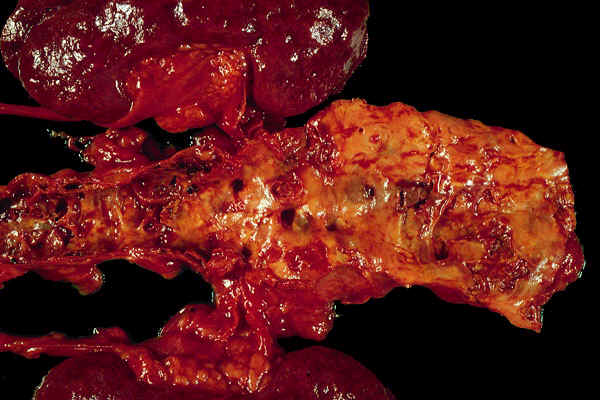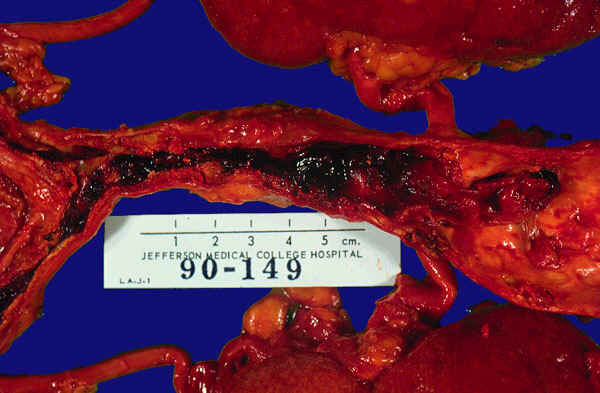Surgical Procedures of Special Concern
|
Coronary bypass surgery |
Carotid vessel surgery |
Aorta surgery |
Major vascular surgery (supplying viscera/limbs) |
|

|

|
-
"Aorta of a young man.
-
It shows
fatty streaks (elongated, flat, yellow lesions) and early fibrotic
plaques, (broader and slightly elevated lesion)"
-
Courtesy of Jim Fishback, M.D., Department of Pathology, University of
Kansas Medical Center
|
-
Fatty
streak of the aorta, histology Lipid containing cells (probably
macrophages) are present in the intima of the aorta"
-
courtesy of Jim Fishback, M.D., Department of Pathology, University of
Kansas Medical Center
|
-
Atheromatous
plaques
-
Reduces vessel diameter (luminal diameter)
-
Location of thrombosis, vessel wall
calcification, vessel wall weakening
-
Clinical Consequences:
-
Occlusion
-
Vessel rupture
-
Aneurysmal dissection
-
Distribution of atheromatous plaques: Factors--
-
Atherogenesis: multistep process probably
involving: (a)
Dysfunctional endothelial cells, (b) induction of
growth and coagulation factors, (c) macrophage and monocyte involvement in injury response)
-
Risk factors (hypolipidemia, smoking,
hypertension) affect multiple steps
-
Hypertension promotes endothelial
damage
-
Abnormal flow/perfusion characteristics
increase atherosclerosis development
-
Hyperlipidemia promotes atherosclerosis
|

|

-
"Severe
atherosclerosis of the aorta.
-
The intima of the aorta is eroded
and ulcerated, appears rough, and is totally covered with clotted
blood."
-
Courtesy of Jim Fishback,
M.D., Department of Pathology, University of Kansas Medical Center
|
|
|
|

|
-
"Atherosclerosis of the order with narrowing
and thrombosis.
-
Narrowing of the aorta is one of the
common complications of atherosclerosis.
-
Thrombi
overlying the ulcerated endothelium contributes to the
narrowing of the lumen and may completely block the blood flow
through the narrow part of the blood vessel."
-
Courtesy of Jim Fishback, M.D., Department of Pathology,
University of Kansas Medical Center
|
|